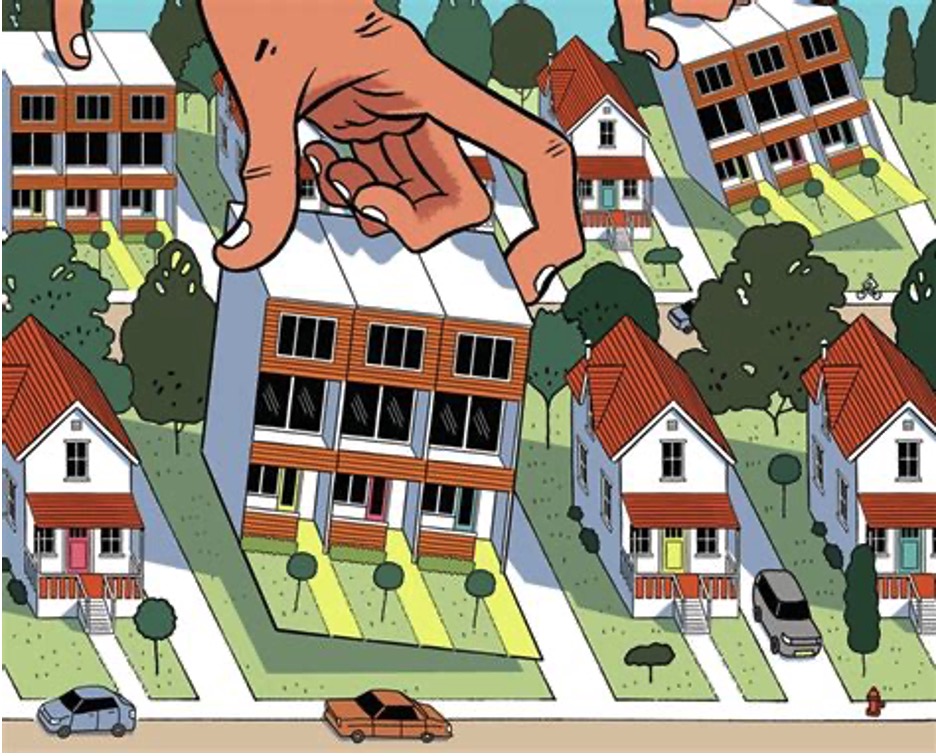Comments
PLANNING WATCH - If charm and good looks made a difference, Mayor Karen Bass’s ED1 - Emergency Homeless Ordinance and her ED2-Inside Safe program should be rousing successes, even with the Department of City Planning’s eight pages of filing instructions. But 18 months after the new Mayor used her executive authority to adopt these Directives, LA’s homeless crisis has gotten worse.
Mayor Bass’s approach to the housing crisis, similar to the City Council’s and the Departments of Housing and City Planning, is that – to be blunt -- handouts to private contractors and non-profits will solve the homeless crisis.
This policy rests on the false assumption that land use laws, especially zoning, induce a housing shortage that causes homelessness. “Cutting red tape,” a euphemism for gutting zoning and environmental laws, is supposed to spark a housing boom that will end homelessness. City Hall believes that these incentives will encourage private and non-profit developers to build so much low income housing that homelessness will evaporate.
I see two major problems with this approach:
First, there are 16 millions vacant houses in the United States. This means that the 650,000 homeless people in the United States each have 24 houses they could theoretically move into. Despite these empty houses, homelessness continues to rise, including in Los Angeles, where the Vacancy Report found that local homelessness is caused by a lack of affordable housing, not an overall housing shortage.
Clearly, other factors are at work. Even though scientific studies of LA’s housing crisis determined that most homeless people are local, there is a baseless myth that LA’s housing crisis is caused by mentally ill and drugged-addicted newcomers moving here for the good life. Never mind that on average three homeless people die every day on Los Angeles streets.
The second myth is that if offered the right combination of economic inducements, especially density bonuses, the private sector will solve the homeless crisis. Unfortunately this theory is totally bogus. As far as I know, its proponents cannot identify any Los Angeles neighborhoods where the elimination of land use laws ended overcrowding and homelessness.

When cities revoke land use laws, they increase legally permitted densities. This makes lots more profitable and raises housing costs. This “reform” prices even more people out of housing and therefore makes the homeless crisis worse. This is why few homeless people move to Los Angeles, and why the rising cost of housing is causing LA's population to decline. LA’s population has already shrunk by 200,000 people, and by 2060 the city will have lost another 600,000 residents.
In addition to these inherent problems with the supply-side assumptions underpinning Mayor Bass’s ED1 program, there is also an immediate problem. United Neighbors, an umbrella organization of local Los Angeles neighborhoods, has identified a proposed ED1 implementation provision that would allow religious institutions to build apartment buildings in single-family neighborhoods.
Since homeowners can already add three Accessory Dwelling Units to their lots, and Senate Bill 9 allows a homeowner or developer to demolish a single-family house, subdivide the underlying lot, and then build a duplex on each half, the church loophole would dramatically increase permitted densities in R-1 neighborhoods. Furthermore, by allowing this construction without any public notice, hearings, or appeals, ED1 is revealing its true colors. It is great for developers, harms existing neighborhoods, and provides little affordable housing for the growing numbers of people who desperately need it.
(Dick Platkin is a retired Los Angeles city planner who reports on local planning issues for CityWatchLA. He is a board member of United Neighborhoods for Los Angeles (UN4LA). Previous columns are available at the CityWatchLA archives. Please send questions to [email protected].)
















